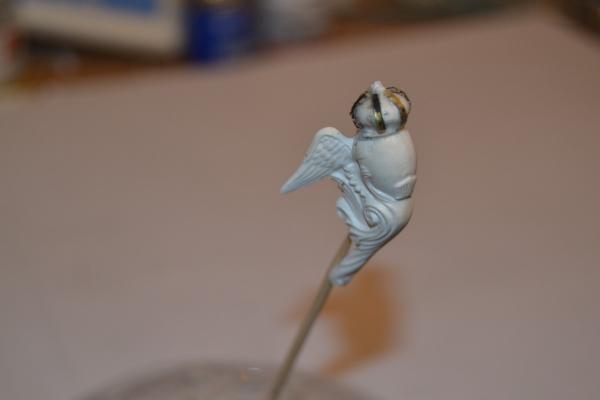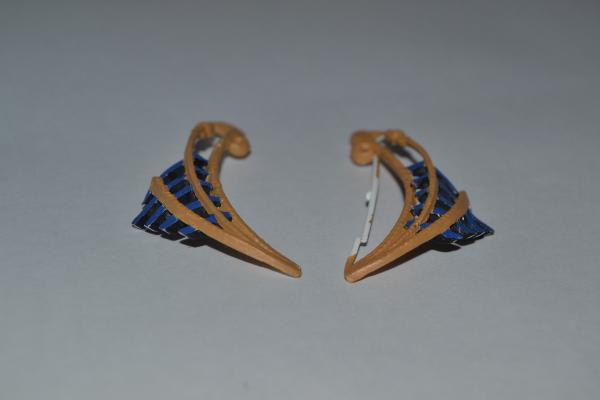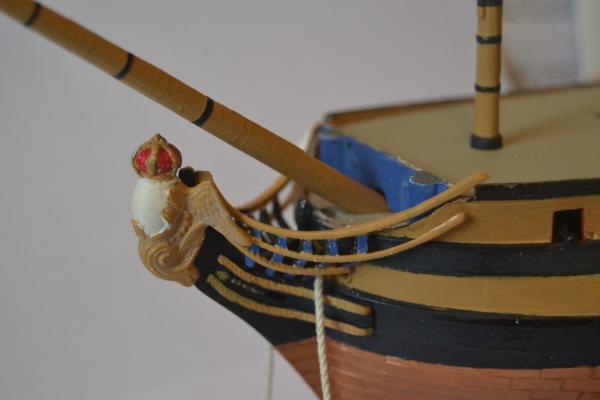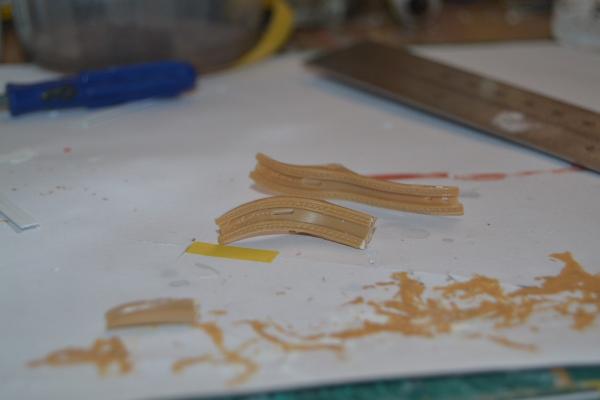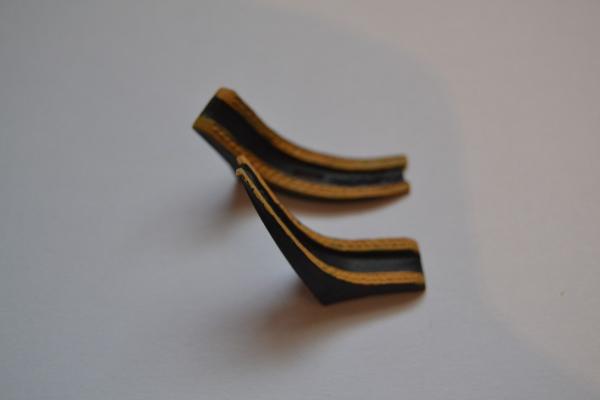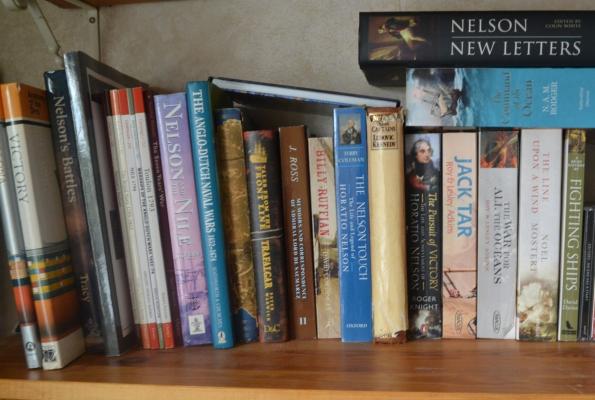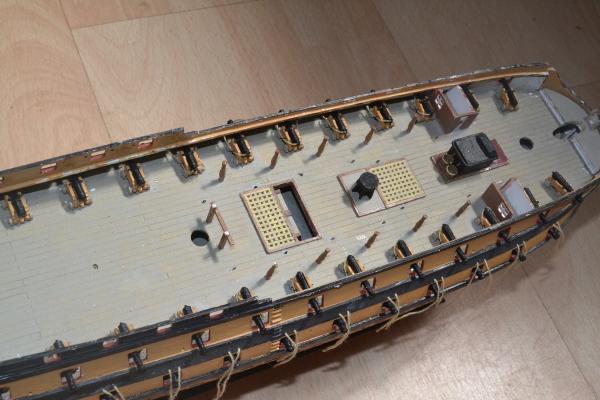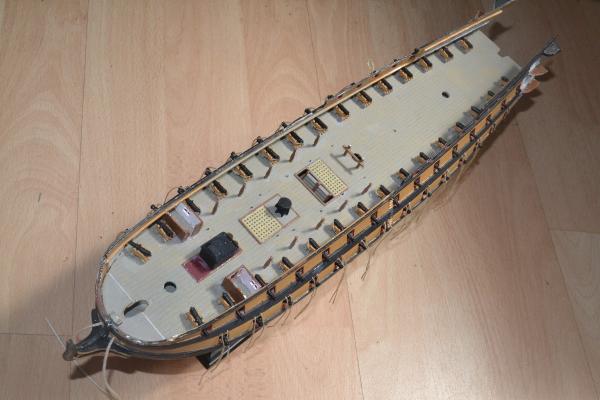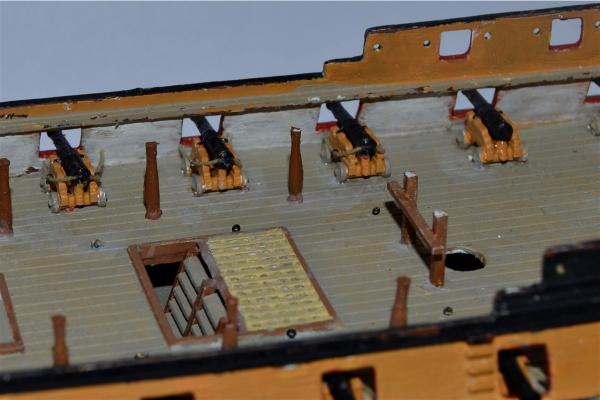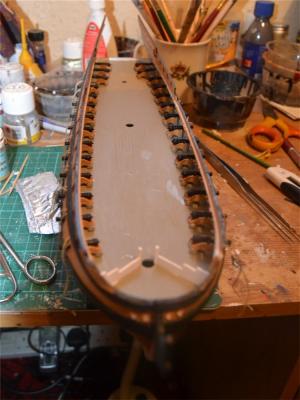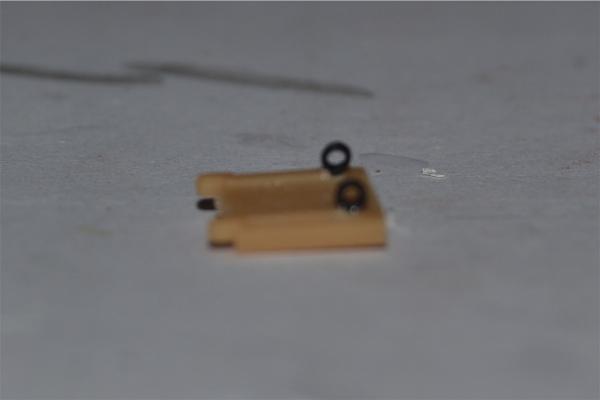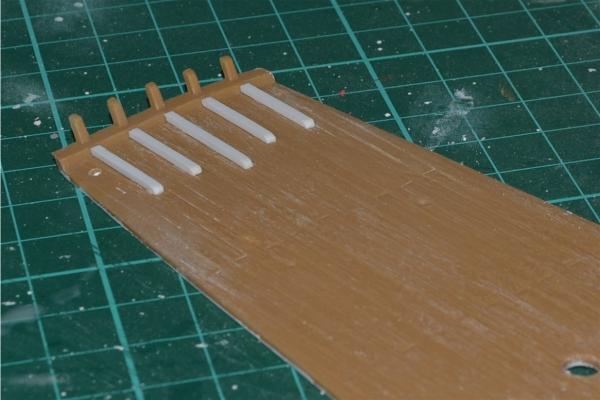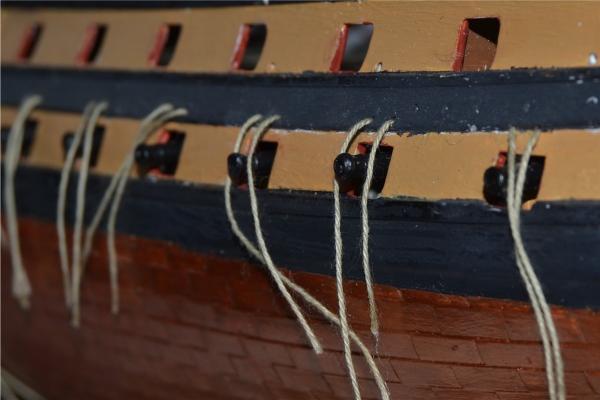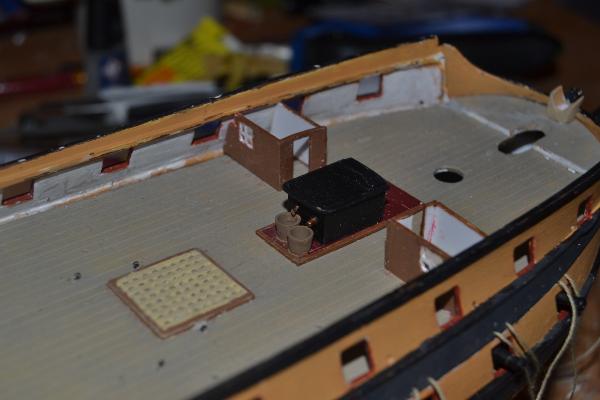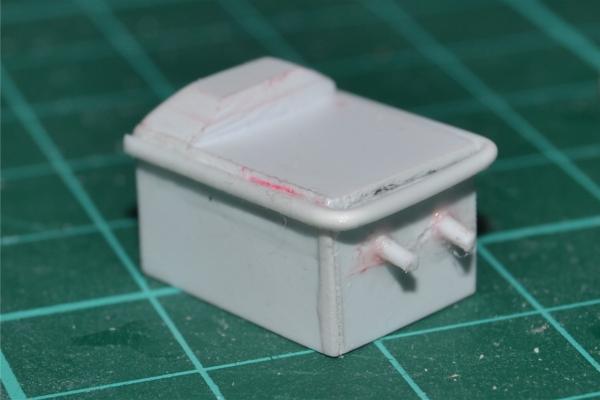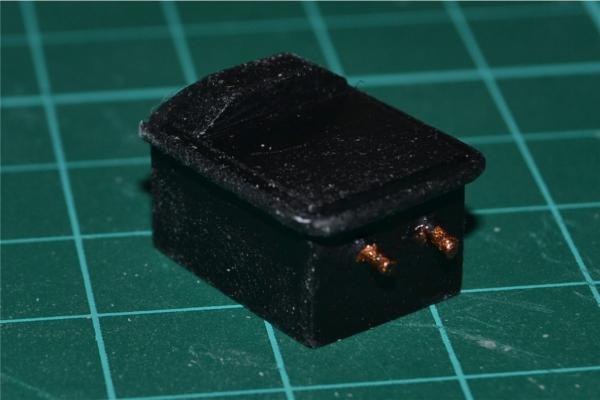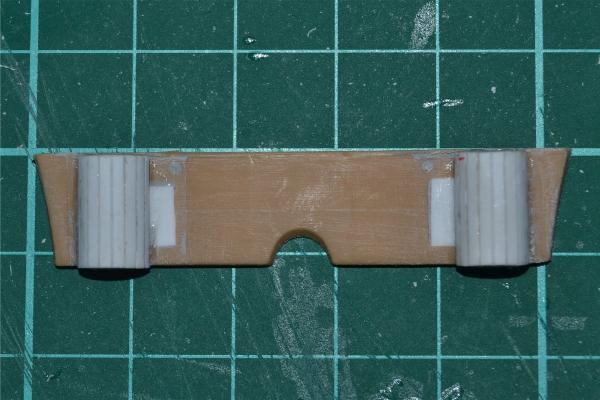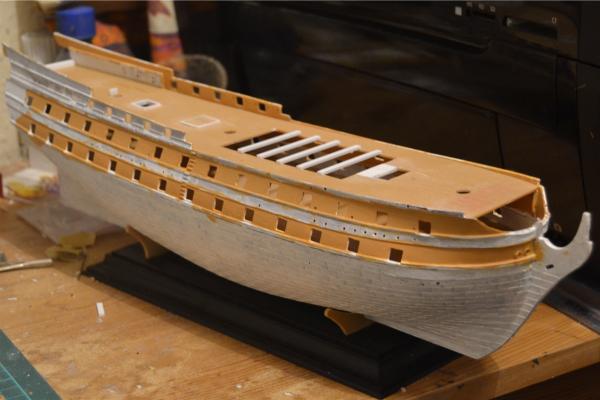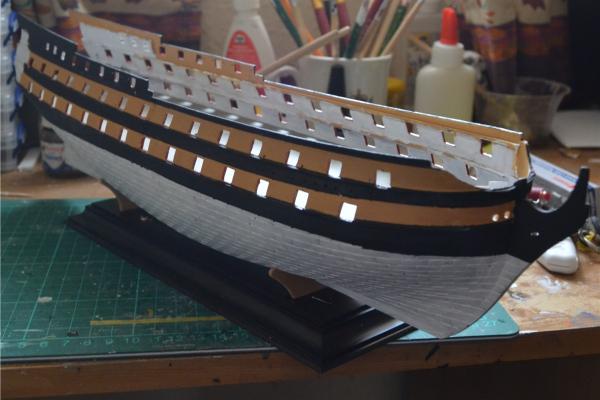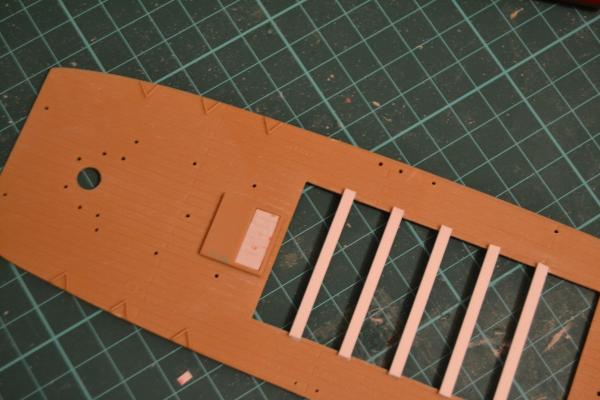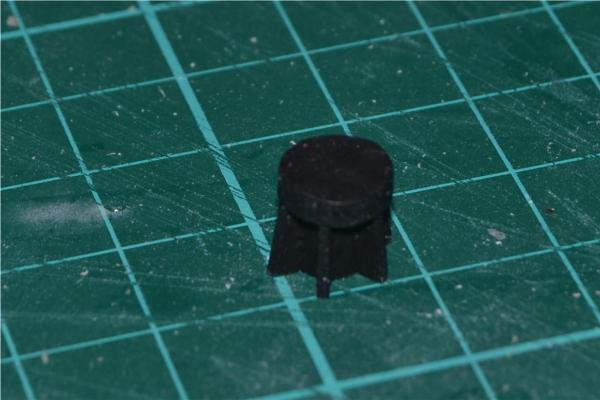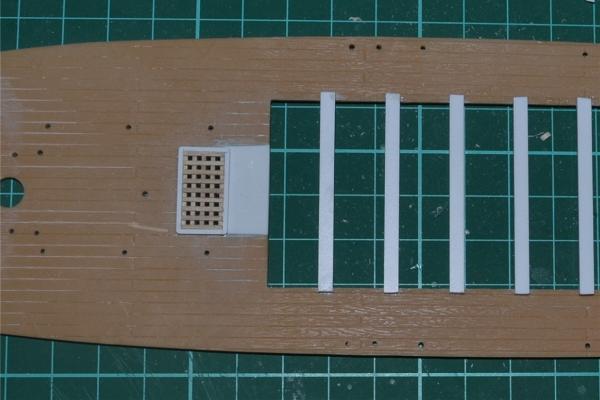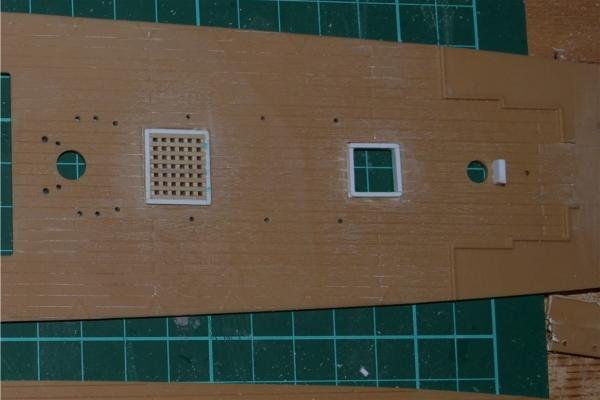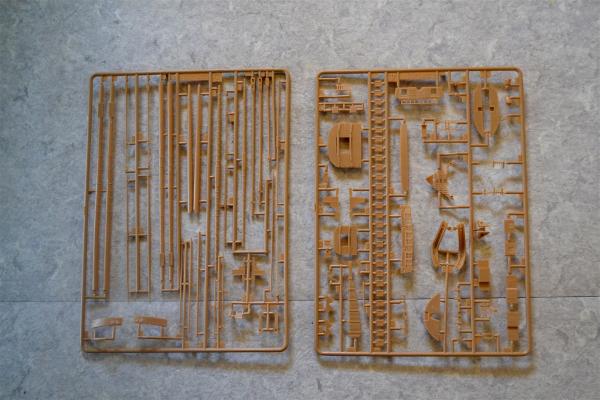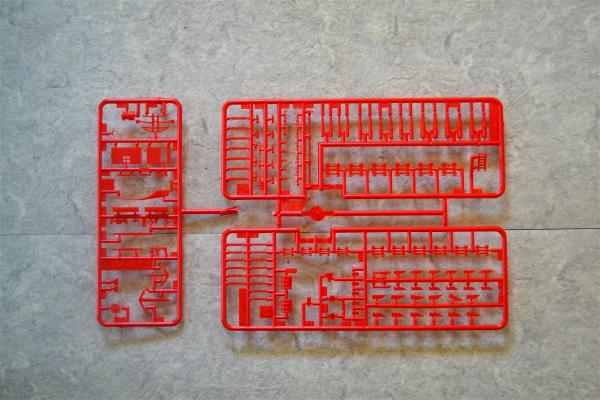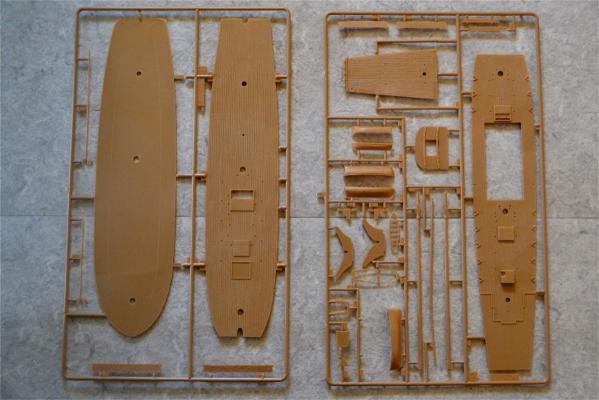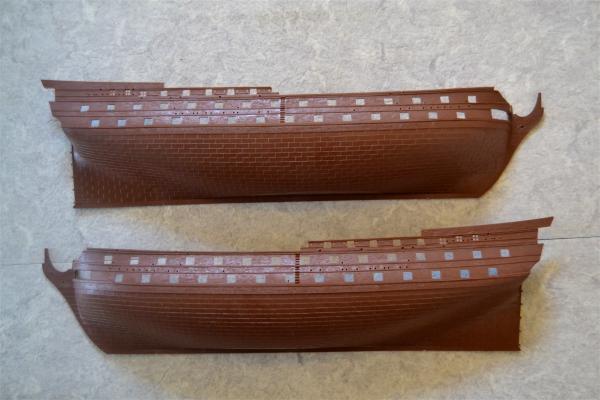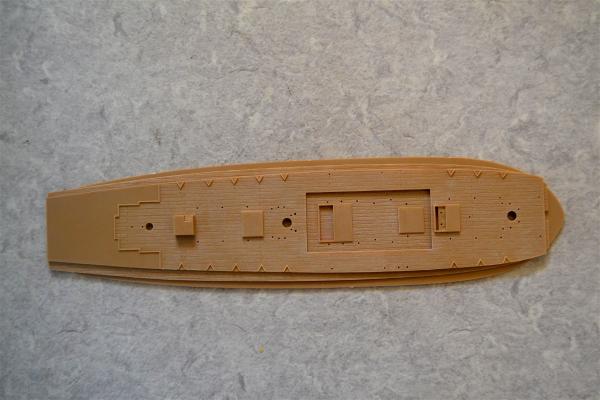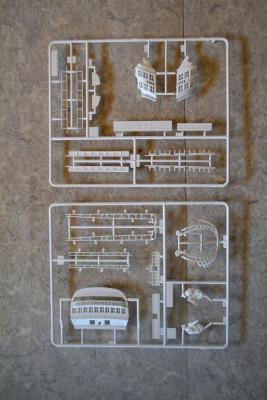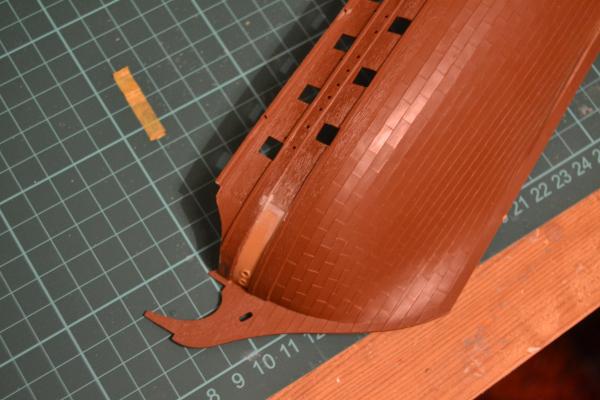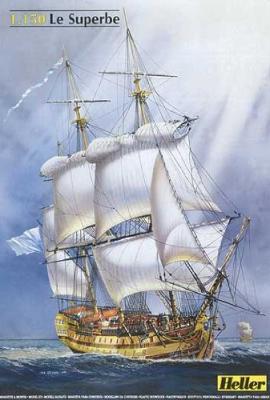-
Posts
43 -
Joined
-
Last visited
Content Type
Profiles
Forums
Gallery
Events
Everything posted by algeciras1801
-
Right, as promised here is an update of work carried out on this conversion. First up is the work carried out around the bows of the ship. The cheeks were shortened by around 1cm and painted up. I added some scrap bits of photo-etch to the crown of the figurehead to give it a bit more definition and i also shortened the tail. The head rails were painted in three colours, yellow ochre, black and blue, I also trimmed them a bit to make them look less ornate. Here are some photos (the last one is just a test fit of the pieces, still some work to be done), Hope you like. Finally, apropos of nothing, here is my collection of ever expanding naval literature.
- 23 replies
-
- le superbe
- heller
-
(and 1 more)
Tagged with:
-
Thanks for all the likes, have been kinda busy lately with university stuff (should get my results next week). Hope to get the build up and running again soon though.
- 23 replies
-
- le superbe
- heller
-
(and 1 more)
Tagged with:
-
Upper gun deck with scratch built Brodie Stove, jeer capstan and main bitts. I have added some deck levels to the quarter galleries at the stern as some of the lights will be covered, some glazed The twelve guns visible through the waist of the ship have been rigged using 0.25mm thread passing through 3mm eyelets. Only the breeching tackle has been represented to simplify matters.
- 23 replies
-
- le superbe
- heller
-
(and 1 more)
Tagged with:
-
Here are all the lower deck guns in position I have added gunport lifts... ...and 3mm eyelets to each gunport lid. I have also uprated the knees on the poop deck Finally, here is the Brodie Stove, sitting on its bed of tiles inbetween the boatswain and carpenters cabins, made from the unused parts for the original galley. That's about it for now. Thanks to all that have liked my posts
- 23 replies
-
- le superbe
- heller
-
(and 1 more)
Tagged with:
-
The Royal Navy employed merchant ships to begin with but they were deemed too slow to keep up with the ships of the line and fire-ships eventually developed into quite complex vessels which made converting existing ships harder so the Tisiphone class (to which Comet belongs) was introduced.Of the nine vessels in this class of ship only Comet and Conflagration were actually used in their intended role
-
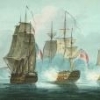
Spanish flag flown at the Battle of Trafalgar
algeciras1801 replied to JerseyCity Frankie's topic in Nautical/Naval History
The flags of all French and Spanish ships captured at Trafalgar were displayed at the funeral as a reminder and celebration of Nelson's achievements. His funeral car also bore the names of the ships San Josef, L'Orient, Trinidad and Bucentaure -
I believe they were for rigging lines that were too thick to fit round the normal belaying pins
-
Belleisle's Brodie stove was constructed from plasticard using the plans found in The 74 Gun Ship Bellona, by Brian Lavery as a guide (scaled down from 1/96 to 1/150) The roundhouses on the beakhead bulkhead were also made from plastic tubing, covered in styrene strip to achieve the correct diameter. Again the dimensions for these were taken from Lavery's 74 Gun Bellona. The two parts forming the hull are made from tough plastic so they went together without any problems with warpage. Here is the hull assembled and painted, still needs some copper paint though. Tony
- 23 replies
-
- le superbe
- heller
-
(and 1 more)
Tagged with:
-
Hi Dafi, My thinking is that masts and yards would not have been replaced as the wood for these was always in short supply but that the rigging would have been altered to conform to British specifications, so i will be keeping the masts, tops and yards but giving Belleisle an English rig (or as close to an English rig as my skills allow.) Thanks Brenticus, I have seen Blue Ensign's stunning La Praetorian build and, like you, find it very inspiring. You are making excellent progress with your own builds by the way. I too wish there were more models of 74's out there as they were the mainstays of both the French and English Navies and i think they are an attractive looking class of ship.
- 23 replies
-
- le superbe
- heller
-
(and 1 more)
Tagged with:
-
Wow! What an enjoyable time i have had reading your modelling masterclass. Half my time was spent staring in awe as the build progressed the rest was spent giggling with delight. You are such an incredibly talented craftswoman Doris. I bow to you. Tony
- 883 replies
-
- royal caroline
- ship of the line
-
(and 1 more)
Tagged with:
-
Hi Steve. In answer to your question regarding the plastic masts and yards, I will be keeping them but as they are quite soft and flexible i have re-inforced the lower masts with wood in the form of cocktail sticks. The foremast and mainmast were quite easy to do as they are made from two hollow sections but the mizzenmast is made from two solid sections so they needed hollowing out before i could insert the cocktail sticks. All three lower masts are a lot less bendy now. Tony
- 23 replies
-
- le superbe
- heller
-
(and 1 more)
Tagged with:
-
Right, about time I hoisted the yards on this build diary and got her under a full spread of sail. As I mentioned in my previous post French and British 74's had different deck layouts, perhaps the most obvious difference was the position of the ship's boats. On a French 74 they sat on the upper gundeck between the foremast and the mainmast wheras on a British 74 they sat one deck higher -exposed on the skid beams on the weather deck. To create these skid beams i used 1.5mm x 3.2mm strips of styrene. These were carefully spaced to ensure the different sized ship's boats would each have beams to sit on. Moving the boats freed up some space on the upper gundeck which i needed to fill with a jeer capstan. The capstan provided with the kit is rather sorry and very un-British looking so this was adapted using some plastic tube and styrene strips. I was not at all impressed with the gratings moulded onto the different decks and so these were replaced with wooden affairs sourced from the Model Dockyard and finished with coamings made from styrene strip In these next shots you can see that i have inserted a section of deck into the forecastle to give a bit of space for the ship's belfry and i have also removed the box over the companionway on the quarterdeck. I also glued the ship's binnacle in place -wrongly as the ship's wheel should now be in front of the mizzenmast not behind it (the binnacle that will replace it is a much improved affair to boot) I have also removed the triangles moulded into the edge of the weather deck (visible in the first image of this post) as British 74's stored their round shot elsewhere That's about it for now. Thanks for viewing
- 23 replies
-
- le superbe
- heller
-
(and 1 more)
Tagged with:
-

Naval History On This Day, Any Nation
algeciras1801 replied to Kevin's topic in Nautical/Naval History
31 July 1653 The Battle of Scheveningen. This battle, the final one of the First Anglo-Dutch War (1652-54), was fought in order to break a blockade of the Dutch coast by the Commonwealth fleet under General at-Sea George Monk and resulted in a crushing defeat for the Dutch who lost fifteen ships and their great commander, Admiral Maarten Tromp, killed by a sharpshooter at the start of the battle. The battle resulted in a peace conference at which the English were able to dictate their own terms. -

Naval History On This Day, Any Nation
algeciras1801 replied to Kevin's topic in Nautical/Naval History
22 July 1805 Finisterre (Calder's Action) Vice-Admiral Calder's squadron of fifteen ships of the line, stationed off Ferrol in northern Spain, intercepts the squadron of Admiral Villeneuve as it returns to European waters from the Caribbean. Heavy fog and light winds delay the action until the evening and the confused, indecisive, encounter ends with Calder badly disabling four ships of the French fleet and capturing another two. The weather improves the following day but Calder, an experienced officer who had been Sir John Jervis’s flag-captain at the Battle of St Vincent, seems more intent on protecting his prizes and chooses not to re-engage. The result of this decision is an eventual court martial which ends his career. -
Not a member of that forum. Thankfully B.E. Is only the click of a mouse away if i need to 'grill him' for information!
- 110 replies
-
- heller
- le superbe
-
(and 2 more)
Tagged with:
-

Naval History On This Day, Any Nation
algeciras1801 replied to Kevin's topic in Nautical/Naval History
12 July 1801 Second Battle of Algeciras. A British squadron commanded by Rear-Admiral James Saumarez defeats a combined French and Spanish squadron commanded by Contre Admiral Charles Linois in a night action off Gibraltar. Two Spanish first rates are destroyed and ship of the line is captured. The victory effectively ends the alliance between France and Spain which in turn results in the signing of the Treaty of Amiens between Britain and France, a treaty which ends the French Revolutionary Wars -
Lukas, I'm not sure if you are aware of this but i've just noticed the pillars supporting the top deck in the waist of the ship (parts 145) are very close to the guns on the upper deck. I've moved mine so they are positioned mid way between each gun port.
- 110 replies
-
- heller
- le superbe
-
(and 2 more)
Tagged with:
-
Hi Lukas, I have progressed quite far into the build so quite a few posts to come until I am up to date. My progress is also extremely slow though -especially when i keep re-doing stuff i thought was already completed!
- 23 replies
-
- le superbe
- heller
-
(and 1 more)
Tagged with:
-
You're welcome Lukas. If I recall correctly Blue Ensign used a 1.0mm size thread for his Le Praetorian but I should think 1.25mm would be fine (It looks okay on my Superbe anyway)
- 110 replies
-
- heller
- le superbe
-
(and 2 more)
Tagged with:
-
Having completed my first model ship (Airfix's HMS Victory) in 2013 I was eager to build a second, 74 gun ship as they were the mainstay of the Royal Navy. However it soon became apparent that none are available in the form of a plastic kit. But, after a bit of digging around i discovered that Heller do two versions of the French 74 gun ship, quite a few of which were captured in battle and re-commissioned into the Royal Navy. This meant i could build a British 74, but i would have to do quite a bit of kit bashing. Now all i had to do was decide what ship to base my model on. THE SHIP Launched at Rochefort on 29 April 1794 Lion was a 74-gun, third rate ship of the line -a member of the Téméraire class designed for the French Navy by Jacques-Noël Sané. In May 1795 the ship was renamed Formidable. Captained by Charles Alexandre Linois Formidable sailed as part of the fleet commanded by Admiral Villaret Joyeuse that fought against the British at the Battle of Groix on 3 June 1795. During the battle Formidable came under the sustained fire of two British ships. Her hull, masts, sails and rigging were badly cut up and a fire soon broke out on her poop. When her mizen mast fell over the side Linois finally hauled down his colours. Over 320 of his crew of 700 had either been killed or wounded in the action. Linois had lost an eye and all his lieutenants had been injured. The ship was taken to Portsmouth where Linois was exchanged. The Royal Navy already had a 90 gun second rate named Formidable and as it was mistakenly believed that the ship had been captured off Belle Ile, rather than the Ile de Groix, she was renamed Belleisle. In August 1798 Belleisle began fitting out at Portsmouth. Her hull was strengthened and much of her internal layout was altered to suit British tastes. The refit took fourteen months and cost £35842.0.0d (roughly two million pounds in todays money) In February 1803 she sailed for the Mediterranean, joining a fleet that would soon fall under the command of Admiral Horatio Nelson. Captained by William Hargood, (her longest serving captain) she was the second ship in the British lee column at Trafalgar, sailing into battle astern of Collingwood’s flag-ship Royal Sovereign. She soon lost all her masts, her bowsprit, her anchors, even her figurehead in her bruising encounter with Fougueux and eight other ships of the combined fleet. The only place left to raise her ensign was at the end of a pike which she managed to keep flying until the ships following behind her in the British line finally came to her rescue. By the end of the battle thirty-three of her people had been killed and a further ninety-four injured. The next day the battered British ships and their French and Spanish prizes were hit by a terrifying storm which did not let go for four whole days. Sails were shredded, fragile masts brought crashing down. When the storm hit Belleisle was under the tow of the frigate Naiad. The tow had broken and as desperate attempts were made to reconnect the line in the heaving swells the two ships crashed into one another, staving in Naiad’s stern. Moments later Naiad’s topsail ripped apart in the howling wind and had to be hacked free; then she lost one of her staysails. By the time Naiad’s sails had been sorted out Belleisle had disappeared from view in the heaving seas and driving rain. Left to fend for themselves Hargood now attempted to take his ship around Cape Trafalgar and into the Straits of Gibraltar under a hastily lashed together jury rig. Around midnight Hargood summoned his officers and told them the ship was about to be wrecked and that they should prepare for the worst. Belleisle’s people, cold and exhausted, waited through the night for the end, but thankfully it never came. By the next morning, using the smallest scrap of sail, they had managed to turn the ship away from the dangerous shore. Naiad returned and as the wind eased was finally able to get a line across to Belleisle and tow her into Gibraltar. Belleisle returned to Portsmouth for a refit which took four months and cost £16384.0.0d. In September 1806 she took part in the capture and destruction of a crippled French 74, Impetueux. After almost four years in command Hargood left the ship a year later. Belleisle was present at the capture of Martinique in January 1809 and later that year she took part in expeditions to the Scheldt and Walcheren. She was finally laid up in ordinary in September 1809. In July 1814 she began a large repair at Portsmouth but a month later the decision was taken to have her broken up instead. THE KIT Copyright Heller The donor kit for this conversion will be Heller’s Le Superbe (80895), a Téméraire class 74 launched in 1784 but wrecked in a storm eleven years later. Here are some sprue shots. These white sprues are the fixtures and fittings for Superbe. Heller's other 74, Glorieux, has a different set of sprues The sprues on the right are for the long guns and carriages. There are five of each provided in the kit The kit also comes with three sheets of vacuformed sails, a chain for the rudder and a rigging machine. No rigging thread though (any provided with the kit would probably have needed replacing anyway.) The instructions are all in French but a page of translations is provided. Parts are both numbered and given a description i.e. 77 bowsprit cap THE BUILD I started things off by sanding down the hull and decks which all have a quite pronounced wood grain effect. I then attached the parts containing the hawse holes to the hull, filling and sanding the gap. As you can see the copper plates continue up to the lower wale rather than finishing at the waterline. This will need to be sorted out. Another area requiring attention are the rather poorly moulded gratings. These need tackling anyway as British and French 74's had different deck layouts.
- 23 replies
-
- le superbe
- heller
-
(and 1 more)
Tagged with:
-

Bowsprit Bees, what they are? (edited by admin)
algeciras1801 replied to Mike Dowling's topic in Masting, rigging and sails
Elm was the preferred wood for keels as it was available in long, straight lengths and was even more resistant to rot than oak -

Bowsprit Bees, what they are? (edited by admin)
algeciras1801 replied to Mike Dowling's topic in Masting, rigging and sails
The Royal Navy made their masts and yards from fir,a strong but flexible wood. Following the loss of her North American colonies this was sourced from the Baltic and Britain went to war twice to ensure its continued supply -
That Hoche is an amazing looking ship....and i don't mean that in a good way!
-
Great build so far Lucas. Love your rigging of the long guns, that must have taken ages and your painting is really crisp and precise. With that new figurehead she looks a dead ringer for Spartiate, a ship captured by the British at the Battle of the Nile in 1798. One thing if i might though, your anchor cable does look a tad overscale. P.S. I believe those front beams you asked about are actually called head rails.
- 110 replies
-
- heller
- le superbe
-
(and 2 more)
Tagged with:
About us
Modelshipworld - Advancing Ship Modeling through Research
SSL Secured
Your security is important for us so this Website is SSL-Secured
NRG Mailing Address
Nautical Research Guild
237 South Lincoln Street
Westmont IL, 60559-1917
Model Ship World ® and the MSW logo are Registered Trademarks, and belong to the Nautical Research Guild (United States Patent and Trademark Office: No. 6,929,264 & No. 6,929,274, registered Dec. 20, 2022)
Helpful Links
About the NRG
If you enjoy building ship models that are historically accurate as well as beautiful, then The Nautical Research Guild (NRG) is just right for you.
The Guild is a non-profit educational organization whose mission is to “Advance Ship Modeling Through Research”. We provide support to our members in their efforts to raise the quality of their model ships.
The Nautical Research Guild has published our world-renowned quarterly magazine, The Nautical Research Journal, since 1955. The pages of the Journal are full of articles by accomplished ship modelers who show you how they create those exquisite details on their models, and by maritime historians who show you the correct details to build. The Journal is available in both print and digital editions. Go to the NRG web site (www.thenrg.org) to download a complimentary digital copy of the Journal. The NRG also publishes plan sets, books and compilations of back issues of the Journal and the former Ships in Scale and Model Ship Builder magazines.


